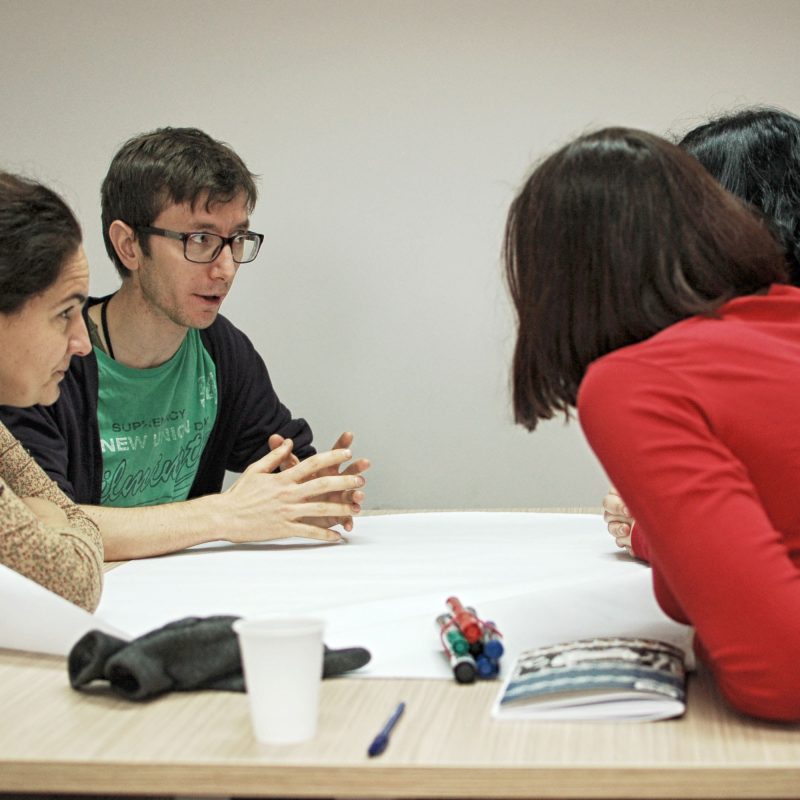
Lead your organization with style
April 25, 2016
Visualize your story
May 19, 2016Build an ethical and responsible business
Use this scenario to help young people learn about companies’ responsibilities towards different stakeholders, and about the basic ethical principles in business.
When to use it:
- understanding entrepreneurs / companies’ responsibilities towards different stakeholders, such as customers, employees, suppliers, community as a whole;
- learning about basic ethical principles that one company / one entrepreneur should follow.
Size of the group: 5 to 15 people
Age of the group: over 14 years old
Time:
Preparation: 40 minutes
Presentation: 1 hour 30 minutes
Materials:
- A4 papers
- pens
- flip-chart papers
- markers
How:
Preparation:
- Read 5.9. Build an ethical and responsible business, from the toolkit, and also read the Ten Principles of UN Global Compact;
- Print out, on separate papers, the profiles of the companies from here.
- Print out or write on a flip=chart paper the Ten Principles UN Global Compact from here (page 17).
Presentation:
- Ask the participants to stand up, while you are placing on the floor sheets of paper with the companies’ profiles you prepared. Tell them that these are all the companies available in their community, and make them choose for what companies will work.
- Read aloud each profile, and ask the participants who will work for the company to make a circle around that company. Using a flipchart rank the companies by the number of people who said that they will not have an issue to work for that company.
- Discuss with participants why they refused some companies, and accepted other companies easier.
- Split the participants in groups of five, and tell them that they build now their own company and they have to decide together on their policies, similar with the one from the profiles used before: what they will never do as company in regards to their employees, customers, suppliers and community in which they will be active; and what they will do for the benefit of their customers, employees, suppliers and community. Explain that this means to develop a code of conduct for their company, respectively for the company’s owners, board members, and employees.
- Give them 20 to 30 minutes to develop the code, and then ask them to present it using a flipchart paper and markers.
- At the end of the presentations, find the common things between the codes, and spot the differences. Use this feedback to introduce The Ten Principles UN Global Compact for companies.
- Present the ten principles (using the print outs or the flipchart paper you prepared), while spotting the common things with the codes developed by the participants or the additional information that was not there in the codes.
Follow-up questions
- Once an entrepreneur, for whom should you feel responsible while running your business?
- What do you think will be the advantages and the disadvantaged of being responsible for your community (customers, employees, community as a whole) while running your business for making profit?
Possible variations
Instead of The Ten Principles UN Global Compact, you could use the OECD Guidelines for Multinational Enterprises (pp. 19-20) or a good example of code of conducts of a company.
Other resources:
The OECD Guidelines for Multinational Enterprises
How to build an ethical business culture
The 4 Pillars of Ethical Enterprises
UN Global Compact seeks local pioneers of Sustainable Development Goals
You must be logged in to post a review.
Related products
-
Lead your organization with style
Use this scenario to help young people learn about and practice different leadership styles.
-
You are rich… for three hours!
Use this scenario to help young people to increase their self-awareness and understand their life priorities.
-
Whom to rescue?
Use this scenario to support young people in developing their abilities in decision making and in selecting criteria for making rational decisions.





Reviews
There are no reviews yet.